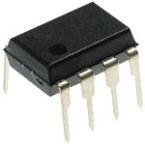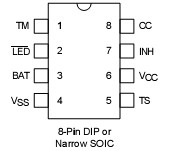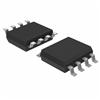bq2002E: Features: Fast charge of nickel cadmium or nickel-metal hydride batteries Direct LED output displays chargestatus Fast-charge termination by -V,maximum voltage, maximum temperature, and maximum time...
floor Price/Ceiling Price
- Part Number:
- bq2002E
- Supply Ability:
- 5000
Price Break
- Qty
- 1~5000
- Unit Price
- Negotiable
- Processing time
- 15 Days
SeekIC Buyer Protection PLUS - newly updated for 2013!
- Escrow Protection.
- Guaranteed refunds.
- Secure payments.
- Learn more >>
Month Sales
268 Transactions
Payment Methods
All payment methods are secure and covered by SeekIC Buyer Protection PLUS.

 bq2002E Data Sheet
bq2002E Data Sheet








